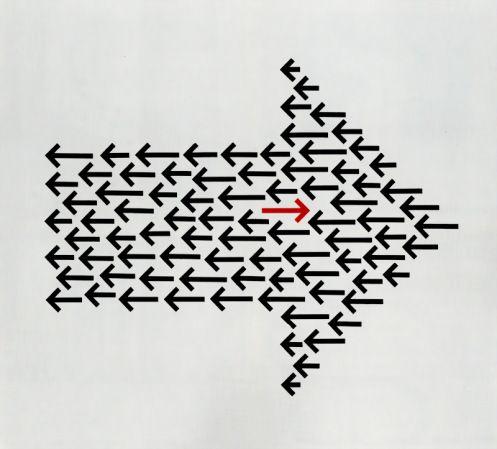- May 1, 2016
- -

Introduction
Intellectual Property Rights (“IPR”) are of utmost value to all stakeholders involved in their value chain, from IP owners to IP-intensive industries and consumers. In most cases, in which IPR have been the result of inventive activity, innovation, allocation of human and other resources, investment and production, counterfeiting comes as a blow against IP-intensive companies, depriving them of valuable resources that could have been allotted to R&D, product perfection and branding. On the public side, counterfeiting could harm government budget and integrity of public administration, by favoring the development of illegal labor, unreported employment, tax and tariffs evasion, corruption and criminal activity, while, on the other side, consumers using counterfeits run under the risk of health and safety issues, since counterfeiters usually do not comply with health and safety regulations. The understanding of all these parameters is crucial for assessing the economic consequences of counterfeiting and for planning appropriate and effective anti-counterfeiting strategies for both government agencies and IPR owners.
This article sets out a series of economic studies and reports on counterfeiting performed so far by various organizations and institutions, presents the data collected via these reports with respect to anti-counterfeiting strategic planning and explains the way such data contribute to the reshaping of the strategies of both brand-owners and central government agencies against counterfeiting.
Economic studies and reports
The Organisation for Economic Co-Operation and Development (the “OECD”) is the first international organization to review and analyze the economic impact of counterfeiting and piracy in international trade. In their report “The Economic Impact of Counterfeiting and Piracy” published in 2007 (the “OECD 2007 Report”), OECD attempted an initial economic analysis of the phenomenon and became a reference milestone upon which all future reports are based thereafter.
OECD estimated that the impact of the problem on international trade (excluding domestically produced goods and digital products) amounted to 200 billion USD in 2005, an amount that was supposed to climb to 1.7 trillion USD in 2015, based on the projections made by BASCAP (Business Action to Stop Counterfeiting and Piracy – an ICC Initiative) in their 2011 report and IPERICO in their 2012 study commissioned by the Italian government. While not always fully substantiated, such estimates are crucial in combatting counterfeiting by raising IP awareness and alerting on the phenomenon’s economic impact on corporate profits, government budget and consumer expenditures, by increasing the degree of mobilization of resources in the anti-counterfeiting struggle and by making clear that full and resourceful commitment is urged to tackle the problem.
The OECD 2007 Report explicitly outlines the impact of counterfeiting in all its dimensions; counterfeiting undermines innovation and employment, deprives governments of tax income, incurs health and safety risks to end consumers (especially as regards healthcare products and pharmaceuticals) and –most of the times– channels any profits arising out of or in relation to counterfeits to criminal networks, such as drug and firearms trading networks. On the same aspect, the “Counterfeiting as an Activity Managed by Transnational Organized Crime” report published by the United Nations Interregional Crime and Justice Research Institute (UNICRI) in 2012 as well as the recent Europol-OHIM 2015 “Situation Report on Counterfeiting in the European Union” provide valuable information on dealing with the consequences of counterfeiting.
In terms of consumer awareness, it is of great interest to follow the distinction between the two principal counterfeit markets, i.e. primary and secondary market. In the first, the main characteristic is the deception of the consumer who unwittingly purchases a product led to believe that it is genuine. In the secondary market, consumers knowingly purchase counterfeits and are fully aware of their active participation in illegal activities. Such distinction between markets and consumers should be definitely taken into account when planning public awareness strategies and examining consumer behavior towards counterfeiting.
When it comes to numbers and quantitative analyses, the OECD 2007 Report made an impressive starting point by being a milestone and an earth-breaking paper in the field of quantification of counterfeiting. However, the next big step in IP quantification was attempted by the latest reports of OHIM (the Office for the Harmonization of the Internal Market – the European Trademark and Design Office). In 2013, OHIM and EPO (the European Patent Office) published a joint report titled “Intellectual property rights intensive industries: contribution to economic performance and employment in the European Union – Industry-Level Analysis Report” (the “Joint Report”).
The Joint Report is not strictly exhausted to anti-counterfeiting, but assesses the economic significance of IPR and the need for their protection, concluding that “IPR-intensive industries generate more than a quarter of employment and more than a third of economic activity in the EU”. On a firm-level analysis report published in 2015 titled “Intellectual property rights and firm performance in Europe: an economic analysis, Firm-Level Analysis Report”, it is evidenced that large companies are four times more likely to own IPR than SMEs – 40% of larger firms have registered rights, compared to 9% of SMEs – and that companies that own IPR perform better than non-owners. Apparently, IP ownership is closely associated with innovation and marketing and is not restricted to the IP ownership title, whereas IPR owners statistically generate higher revenue per employee, pay higher salaries and employ a higher number of employees.
Sectorial studies shed more light on the matters set out so far, providing valuable information. OHIM in “The economic cost of IPR infringement in the cosmetics and personal care sector – Quantification of infringement in Manufacture of perfumes and toilet preparations sector” report estimates that the legitimate industry (industry of genuine goods) loses approximately 4.7 billion Euro of annual revenue, i.e. 7.8% of the sector’s sales and 50.000 job losses, due to the production and distribution of counterfeit cosmetics (perfumes, beauty and make-up) and other healthcare products (sunburn protection creams, shampoos, toothpaste, shaving products and deodorants) in the EU marketplace. Sector damages are rocketed to 9.5 billion Euro of lost industry sales, 80.000 job losses and a loss of 1.7 billion Euro in government revenue, in case knock-on effects on other industries and on government revenue are additionally taken into account.
Another report on “The economic cost of IPR infringement in the Clothing, Footwear and Accessories Sector” reveals that legitimate industry loses approximately 26.3 billion Euro of revenue annually, corresponding to 9.7% of the sector’s sales in the EU. Direct employment losses equal to 363.000 job cuts, associated only with counterfeits manufactured within the EU. When adding damages incurred due to indirect effects, general losses in the clothing, footwear and accessories sector translate into approximately 43.3 billion Euro of lost sales in the EU, 518.281 job losses and a loss of 8.1 billion Euro in government revenue.
Anti-counterfeiting strategic planning
Economic studies and reports, assessing the economic significance of IPR and impact of counterfeiting, are valuable, not only in understanding the role and value of Intellectual Property in modern economy, but in perceiving also the rationale and framework within which anti-counterfeiting strategies should be shaped and respective goals should be set. The need for updating and reshaping anti-counterfeiting strategies is urgent for both government authorities and brand owners that should enhance cooperation and create comprehensive and up to date plans against counterfeiting.
In addition to the general assessment of the value and importance of Intellectual Property, economic studies provide data that are of essence in implementing an efficient anti-counterfeiting strategic planning:
(i) Assessment of the economic impact of international versus domestic counterfeiting. Any calculations and/or quantitative analyses on the economic impact of counterfeiting and the respective results indicate most of the times the direction that should be followed in terms of anti-counterfeiting efforts and resources. In particular, if the problem in a country or a region is focused on local production, efforts should be directed towards manufacturing centers and exporting networks, whereas, if the problem is caused by importation inflow of counterfeits, then efforts should be primarily concentrated on border protection and domestic distribution networks. One more problem that needs to be assessed and successfully addressed is related to the transit of counterfeit goods; in this case the respective anti-counterfeiting efforts should be conducted on the basis of the available data on the flow of counterfeits, routes, points of origin and destination.
(ii) Primary or secondary counterfeit market. In case evidence-based surveys confirm that consumer behavior towards counterfeits is driven by deceptive practices and misleading information on the part of counterfeiters (e.g. high prices or fake sales and offers), efforts should be concentrated on sophisticated investigation, whereas in secondary counterfeit market, where consumers consciously opt to purchase counterfeits, efforts should be directed towards sophisticated public awareness campaigns, through which consumers should be made aware of the value of IPR and the negative effects of counterfeiting.
(iii) Assessment of the economic impact in the various public financial figures. Expert reports and studies present detailed overviews of counterfeiting impact on employment as well as on different public finance figures, such as GDP, income revenue and VAT evasion and social security contributions.
(iv) Identification of sectors most affected by counterfeiting. The diversity of counterfeits and the wide range of sectors affected by them make the implementation of a uniform anti-counterfeiting strategy by governments and their agencies/authorities practically impossible. Although IPR owners may usually focus on one or two sectors and deal with counterfeiting through their extensive knowledge of the relevant markets, governmental agencies are called upon to confront the problem in almost all industry sectors and all product categories. The idea of a single consolidated anti-counterfeiting method is hampered due to the fact that certain products, for example tobacco and luxury products, do not have the same source, distribution channel, concealing methods, criminal profile or even impact on public revenue, enhancing the risk of a possible disintegration of a uniform strategy; such risk may be mitigated only through extensive information on the most counterfeited products and allocation of resources to the study and investigation of how the relevant industry sectors are hit by counterfeiting.
(v) Financial impact on the IP-holders revenue. Although counterfeiting is a serious problem for practically all IP-intensive companies, proliferation of counterfeits makes the “hunting” of infringers and their products a financially exhausting operation that most brand-owners cannot afford. As a result, many companies choose to focus only on markets of great importance and/or large seizures, abandoning efforts in smaller markets. Unfortunately, such strategy leads to a high-risk practice in favor of the interests of infringers, who – instead of feeling threatened and being discouraged – simply share the need to readjust their practices and focus, in order to adapt to the new circumstances created by the anti-counterfeiting strategies selected each time by the brand owners.
Challenges
In light of the information provided in economic papers and reports on counterfeiting and the analysis of the respective data, new challenges arise for both governments and brand owners in planning and shaping anti-counterfeiting strategic plans. The following points should be addressed via elaborate and consistent planning:
Reports and studies performed by prestigious institutions on anti-counterfeiting provide governments with a full set of financial and other data, which can be further assessed and used in anti-counterfeiting efforts. For instance, data collected from reports on quantification of the economic impact of the phenomenon may be used to further enhance public and agency awareness, since they highlight the severe negative impact counterfeiting has on all aspects of public and social life, including fiscal figures and employment. Moreover, reports reveal counterfeiting’s interrelation with organized crime, the impact of both domestic and international illegal operations, the routes and infiltration of distribution channels with illicit revenue and could, therefore, offer new perspectives and way-outs in the combat against counterfeiting.
On the other hand, brand owners should better evaluate the information and conclusions of the reports in reshaping their own strategies. The increase of sectorial reports secures valuable information on the status of counterfeiting in different countries, thus helping brand-owners to focus where most needed. Furthermore, on a firm-level, the general adverse impact of counterfeiting is making brand owners more alert and conscious in addressing all types of counterfeiting across the infringement scale, allocating their resources proportionally.
Conclusion
In consideration of the analysis set out in this article, the following may be concluded for further research:
– A considerable number of reports and studies associated with the economic impact of counterfeiting, which include quantification of impact on global, sectorial and firm level have been published, providing valuable information on the issue.
– The information included in such reports is beneficial to both brand-owners and government agencies in planning and re-shaping their anti-counterfeiting strategies.
– Updated reports provide information on reconsidering and evaluating strategies on a continuous basis.
Michalis Kosmopoulos
Partner Greece






